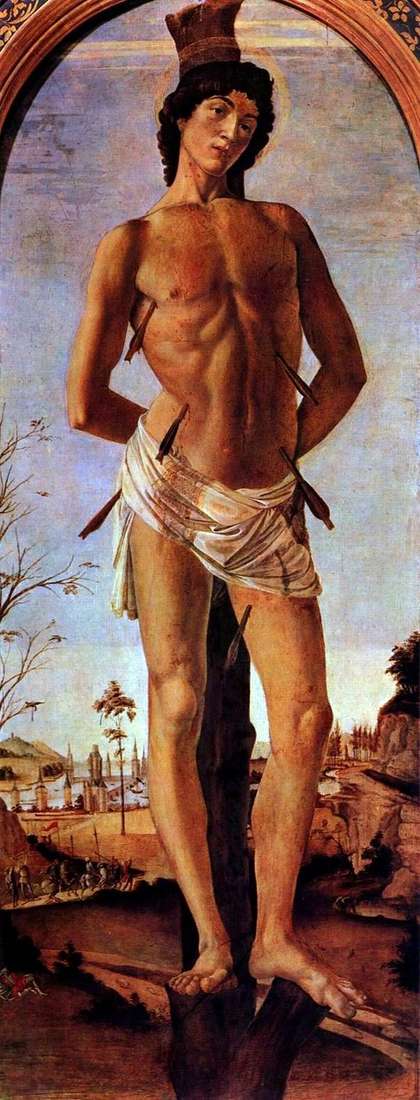
Orders Botticelli received mainly in Florence. One of his most remarkable paintings is “Saint Sebastian” performed for the oldest church in Santa Maria Maggiore. On January 20, 1474, on the occasion of the feast of Saint Sebastian Maggiore, the painting was solemnly placed on one of the columns of the church of Santa Maria. This is the first documented religious work of the artist, henceforth firmly established in the artistic panorama of Florence.
The painting depicts the martyr 3 c. n. e. Sevastyan, commander of the Praetorians of a noble family, who believed in Christ. Emperor Diocletian sentenced him to execution. The young man was tied to a post in the Coliseum, and a detachment of legionaries released a thousand arrows into it. Sevastyan was left to die. The mother of one executed Christian came out of him, she urged him to flee Rome.
But Sevastyan openly declared his faith – he stepped on the steps of the imperial palace in defense of the condemned Christians. Diocletian again ordered the execution of Sebastian. Brothers by faith found his body and were buried in the catacombs next to the tombs of St. Peter and St. Paul.
Sebastian was canonized by the Catholic Church. In the 5th century a temple was built on his grave. In the past, St. Sebastian was called to the aid of sick plague, he is considered the patron saint of soldiers, archers, potters.
Usually this saint was depicted as a young man tied to a pillar and pierced by arrows. The figure of St. in the interpretation of Botticelli is facilitated, the proportions of his beautiful body are elongated. Sebastian’s figure, his pose, and even the trunk of the tree to which he is attached, almost exactly repeats the picture of Pollayolo; but Pollajolo Sebastian is surrounded by soldiers, they shoot him – and he suffers: his legs tremble, his back convulsively curved, his face raised to heaven.
The figure of the Botticellian hero expresses complete indifference to the surroundings, and even the position of his hands connected behind his back is perceived rather as a gesture expressing profound meditation; the same meditation is written on his face, with slightly raised ones as if in a mournful eyebrow surprise. The artist does not praise the hero, pierced by arrows, but as if mourns for the ruined beauty.
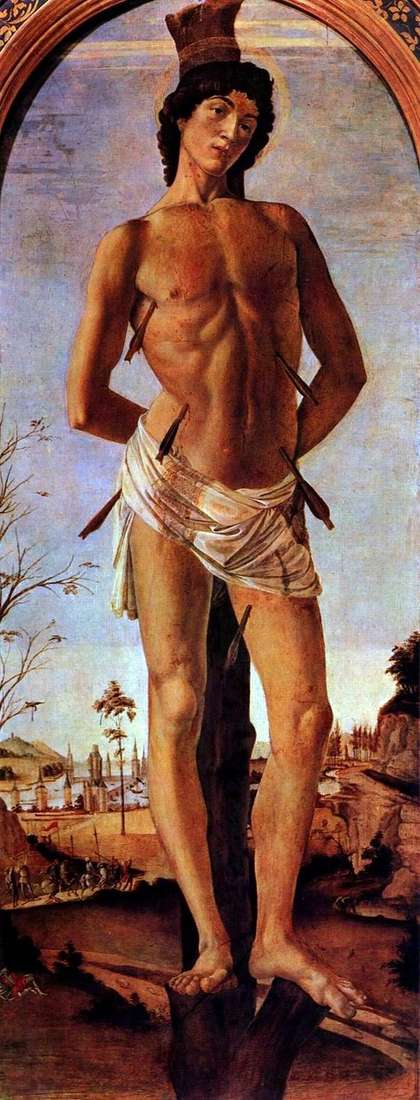 San Sebastián – Sandro Botticelli
San Sebastián – Sandro Botticelli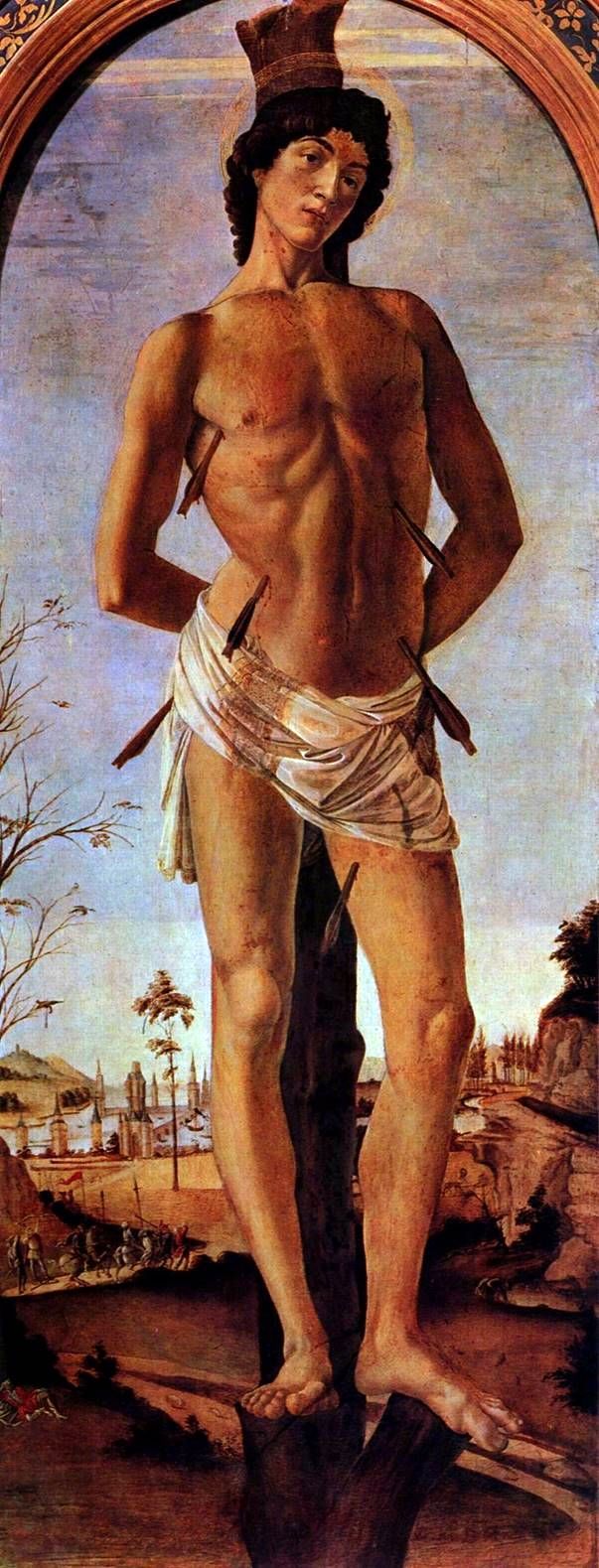 Saint Sébastien – Sandro Botticelli
Saint Sébastien – Sandro Botticelli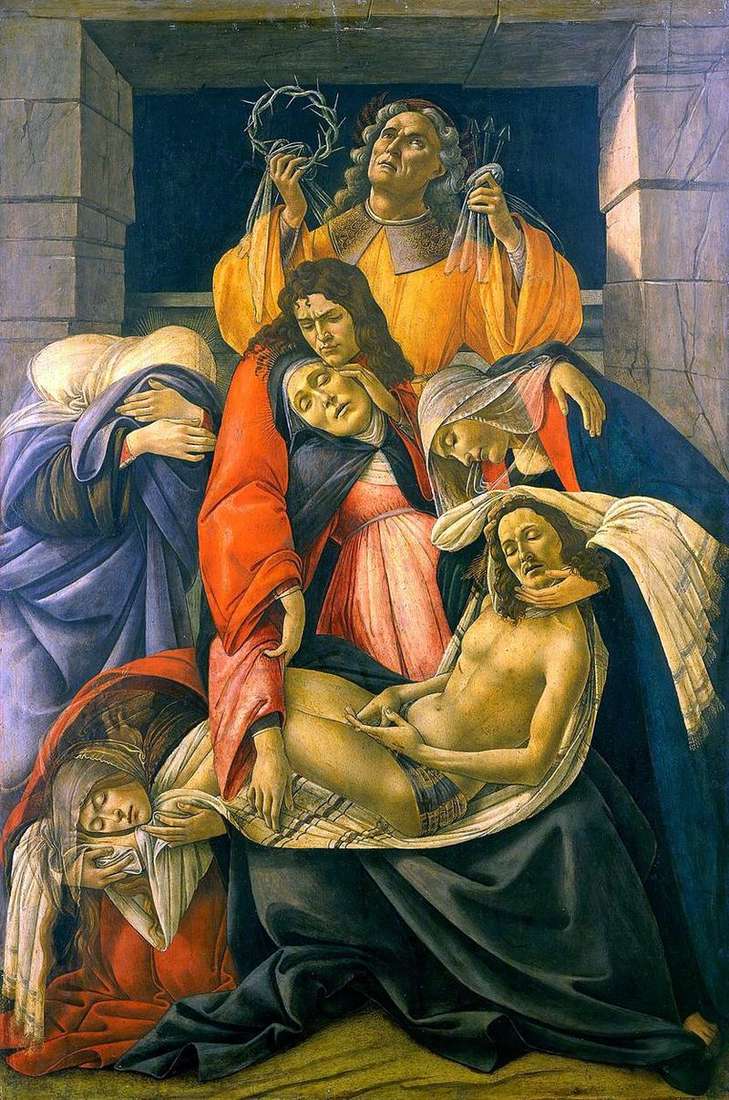 Lamentation of Christ by Sandro Botticelli
Lamentation of Christ by Sandro Botticelli The Story of Saint Zinovy by Sandro Botticelli
The Story of Saint Zinovy by Sandro Botticelli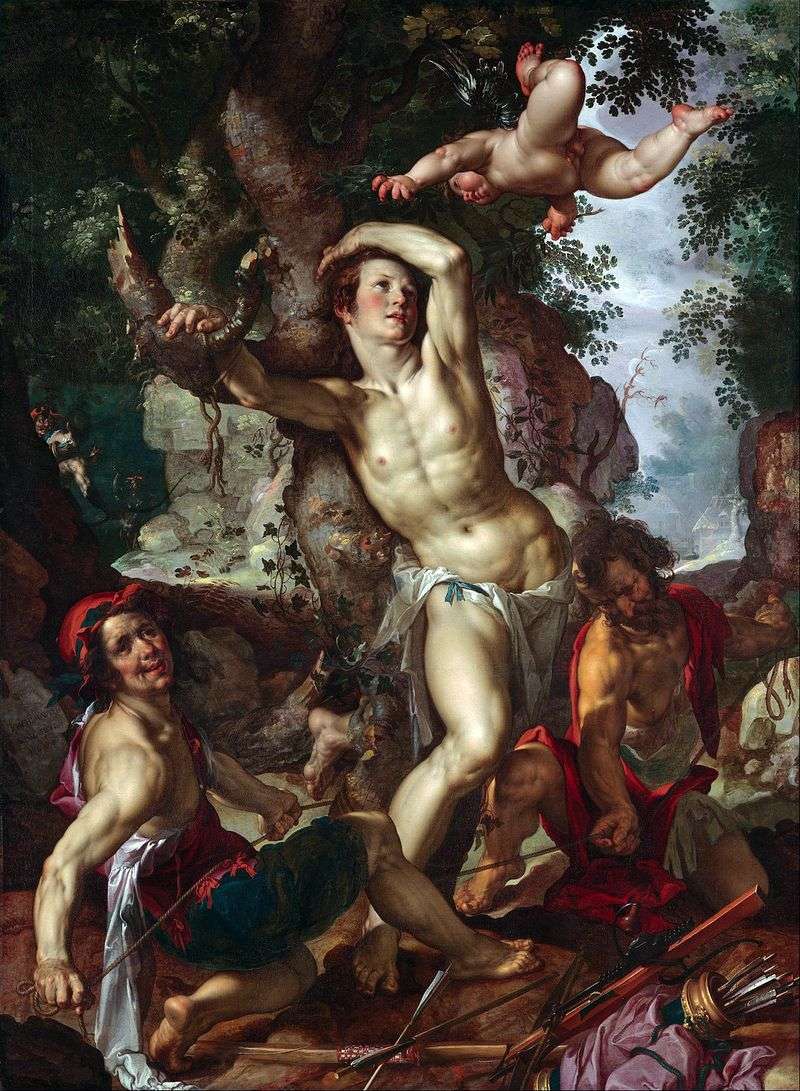 The death of St. Sebastian by Joachim Eytale
The death of St. Sebastian by Joachim Eytale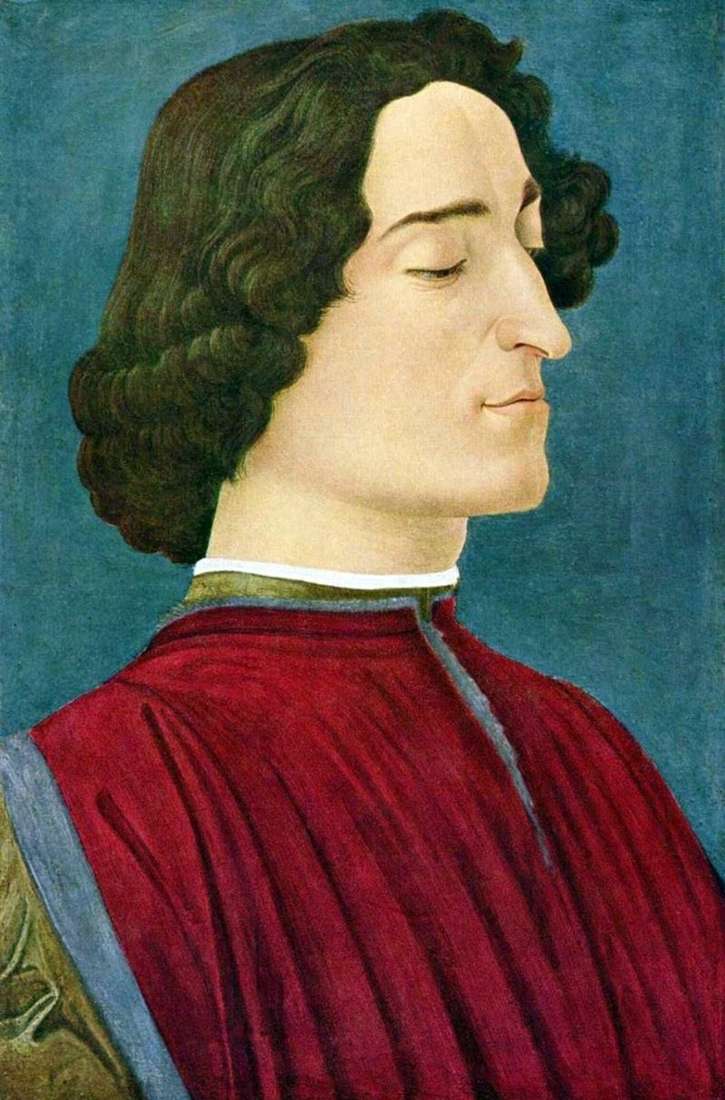 Portrait of Giuliano Medici by Sandro Botticelli
Portrait of Giuliano Medici by Sandro Botticelli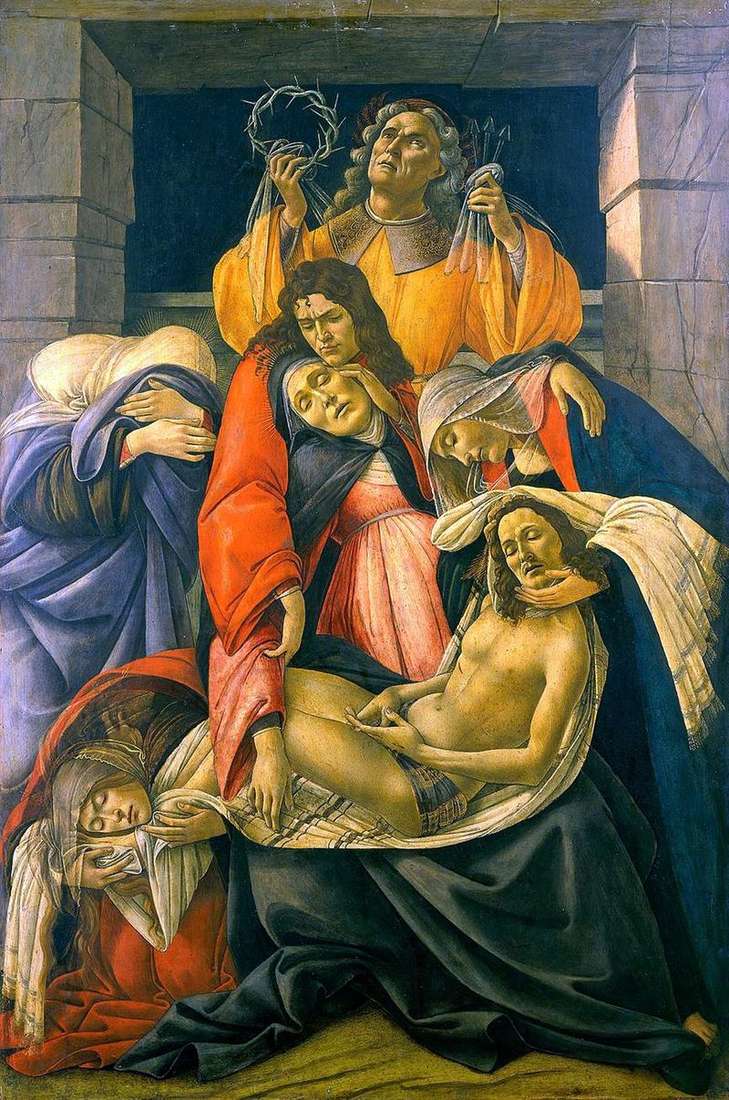 Pieta (Lamentation) by Sandro Botticelli
Pieta (Lamentation) by Sandro Botticelli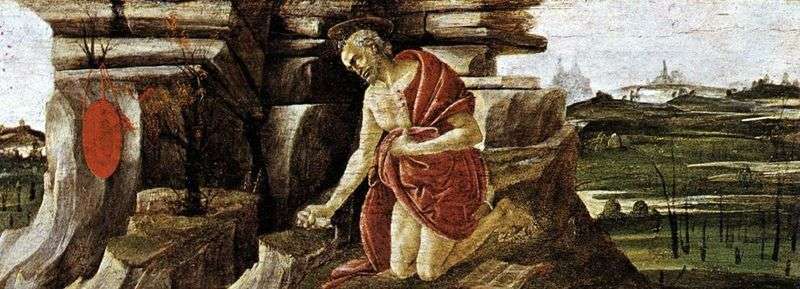 Repentance of Saint Jerome by Sandro Botticelli
Repentance of Saint Jerome by Sandro Botticelli